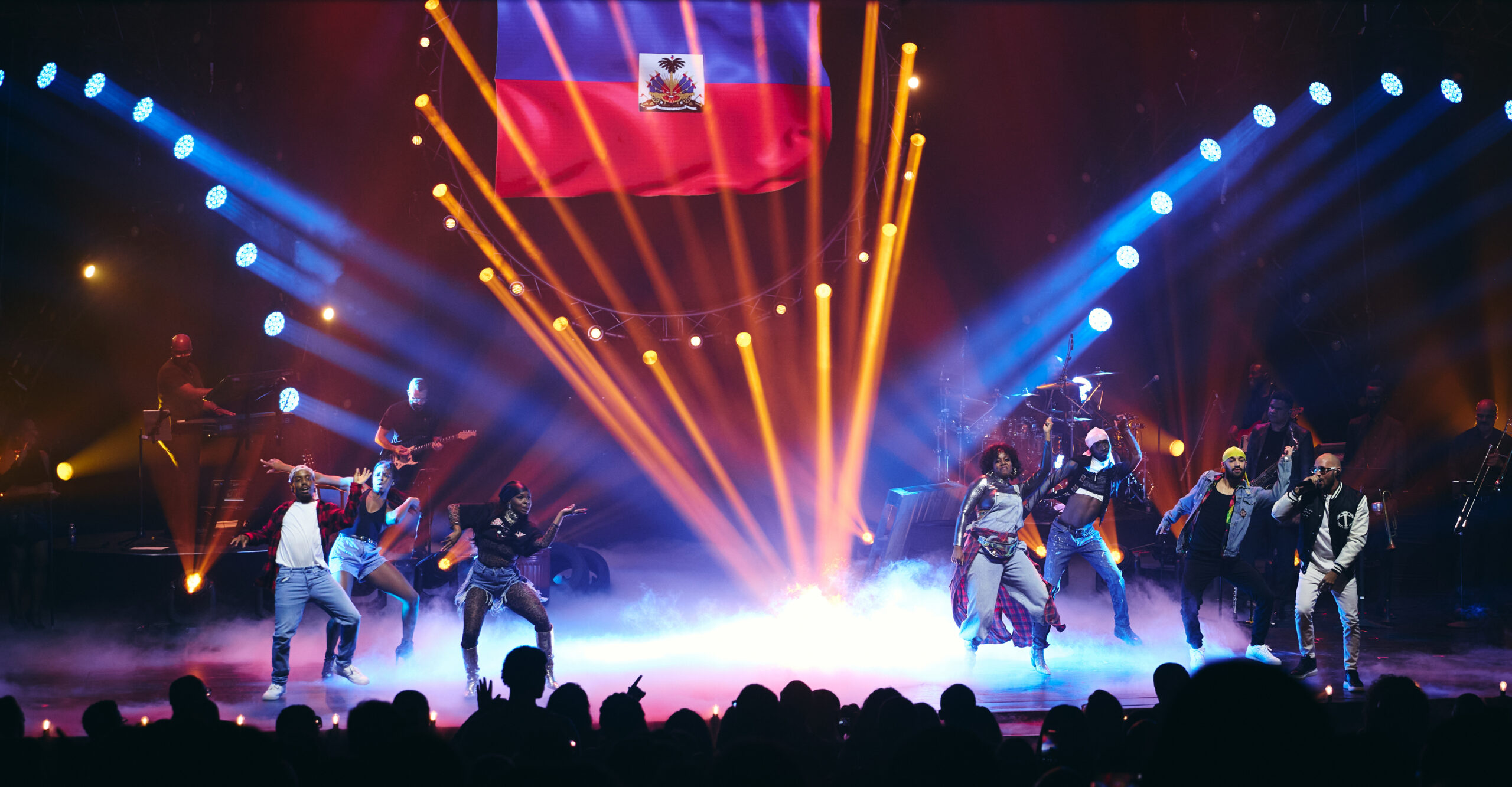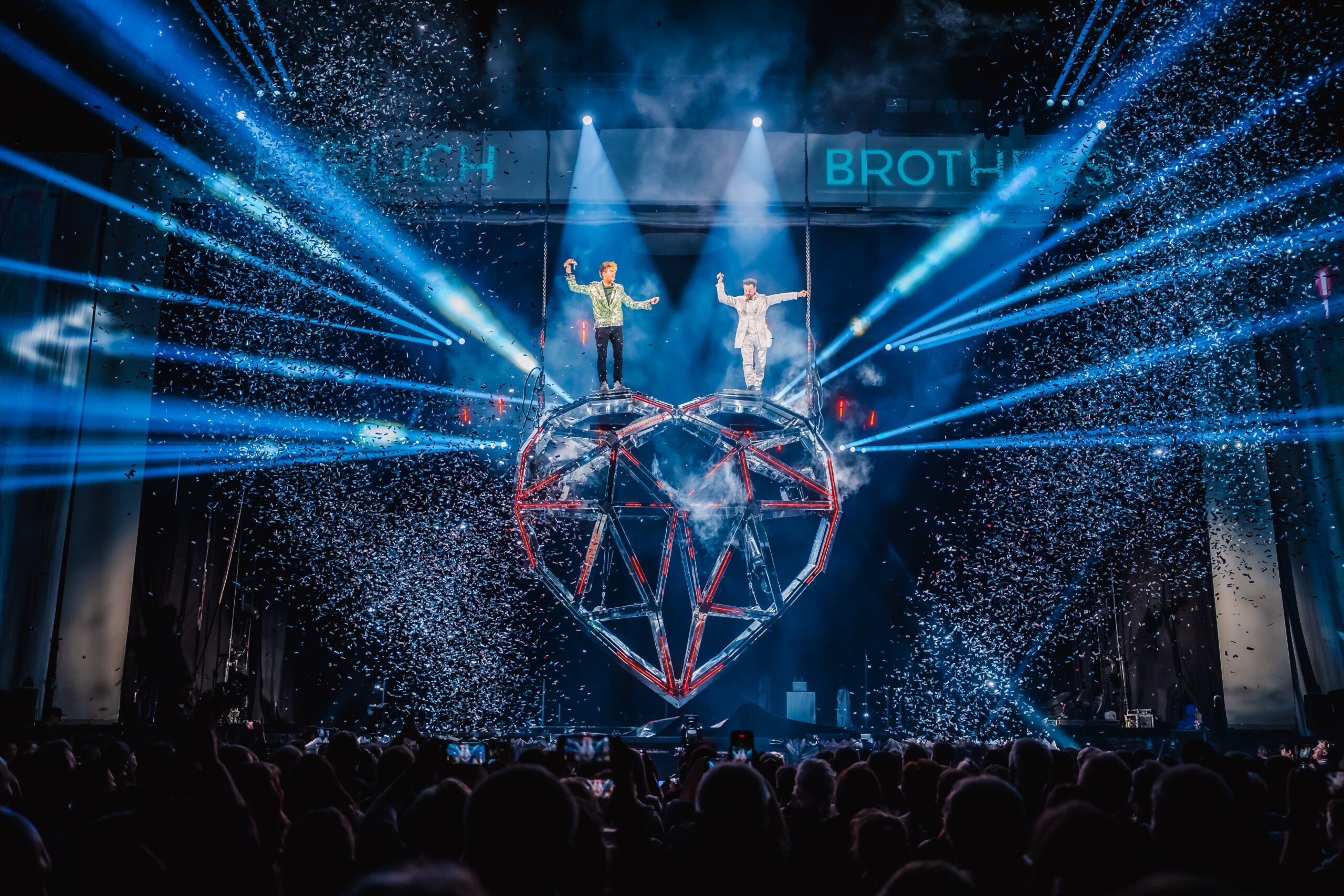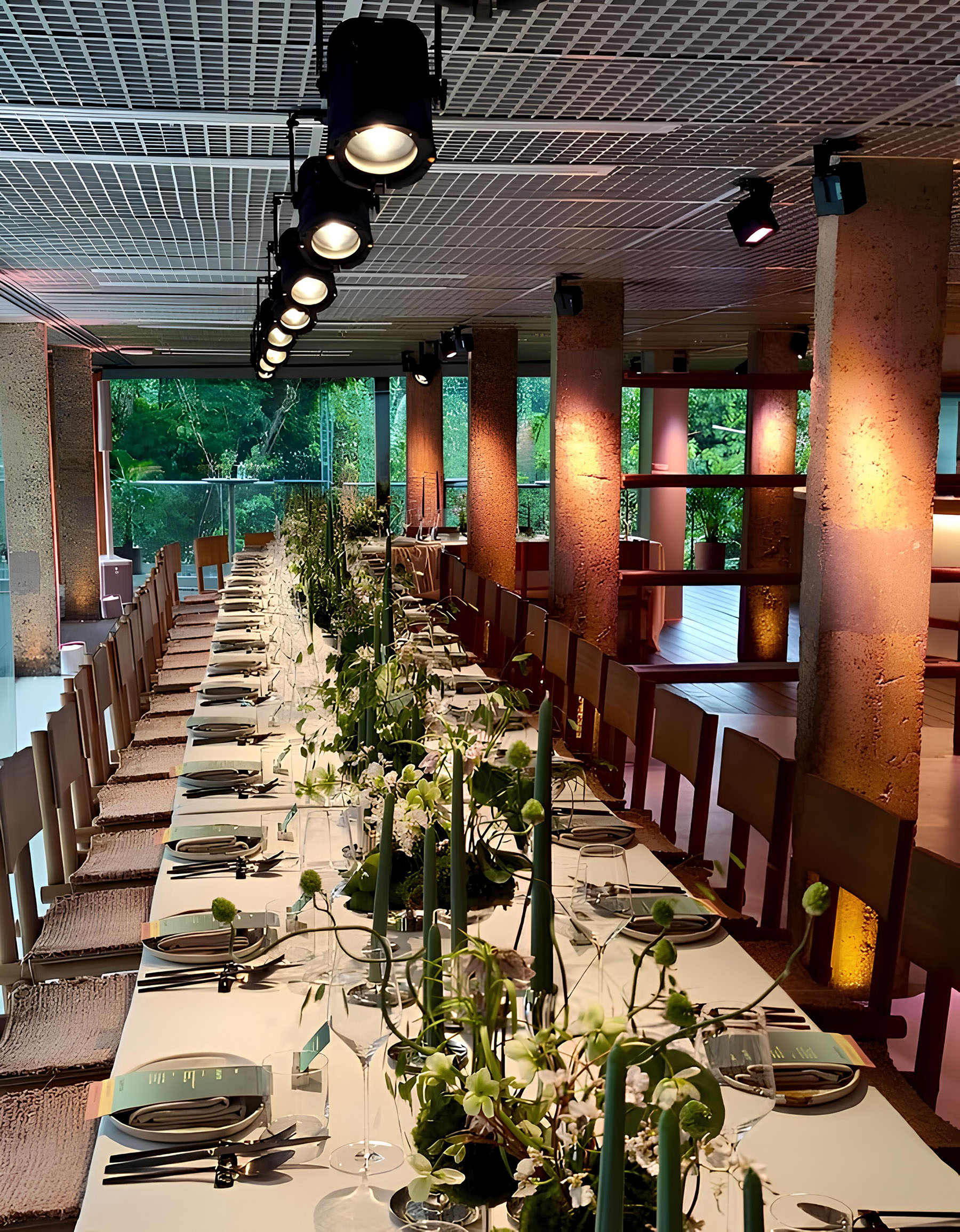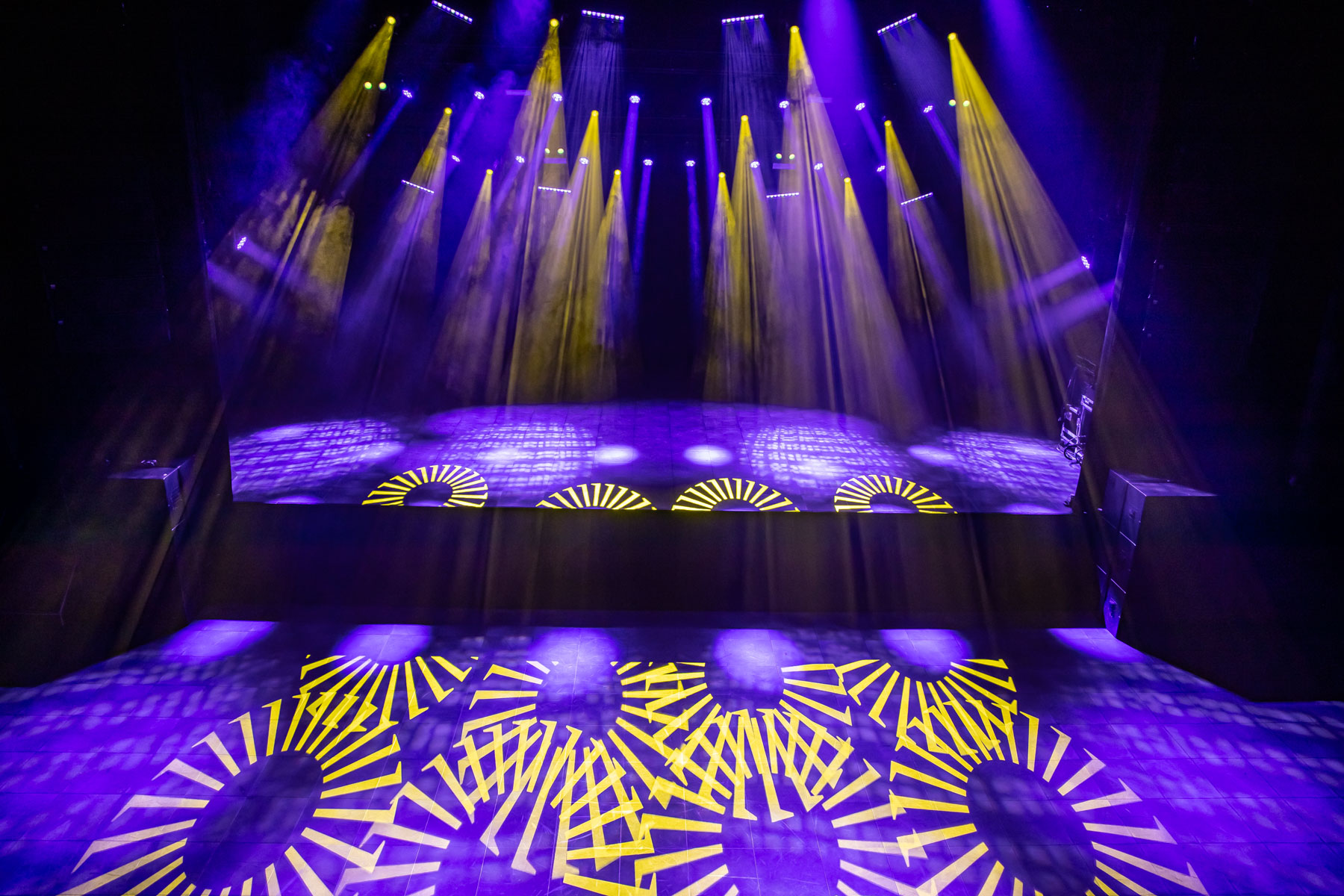BAKU, Azerbaijan – The Eurovision Song Contest recently completed its 57th year, held at The Baku Crystal Hall in Azerbaijan. LD Jerry Appelt specified an arsenal of 2,891 lighting fixtures. Of the 1,400-plus moving heads, 667 were Clay Paky fixtures. One lighting element new to the Eurovision stage was the Parasol KLR (Kinetic Light Ring) system, hung directly over the stage, which allows moving lights to move along a fixed path on a linear or curved truss. The Eurovision system consisted of three concentric rings with circular motion, all lit with Alpha Beam 1500s, with their independent and simultaneous motion over the stage for a dynamic effect.
More details from Clay Paky (http://www.claypaky.it):
BAKU, Azerbaijan – The Eurovision Song Contest recently completed its 57th year, held at The Baku Crystal Hall in Azerbaijan, a brand new multi-purpose indoor arena with a capacity of 23,000 spectators. The Baku Crystal Hall was commissioned by the City of Baku specifically for this event and construction was completed in eight months.
The event makes news every year with respect to both its technical achievements as well as for its broad and colorful spectrum of musical performances.
The Eurovision Song Contest format is fairly straightforward. Member countries of the European Broadcasting Union (EBU) can submit an original song to compete in the annual show. Based on the performance, the public audience of the participating countries phone in votes for their favorite act, as long as it’s not their own country. Combined with the scores of professional national juries, a winning country is chosen which has the additional privilege of hosting the contest the following year. Last year, Ell and Nikki of Azerbaijan were crowned winner with their song “Running Scared,” putting the contest in the capital of Baku for the first time.
Baku hosted 42 participating countries spanning three live broadcasts – two Semi-finals on May 22nd and 24th and the Finals on May 26th. The 2012 Finals had a live viewing audience of 23,000 plus an estimated 125 million television and internet viewers worldwide, making it the largest music television program in the world.
German Lighting Designer Jerry Appelt specified an arsenal of lighting for the new arena. More than 1,400 moving lights (2,891 fixtures total) allowed the 42 contestants, plus an elaborate interval act and opening performance, to have a completely unique look during the overall 7-hour broadcasts.
The overall goal of the lighting design was to mimic and complement the architectural design created by Stage Designer Florian Wieder. Of the 1,400-plus moving heads, 667 were Clay Paky. They were primarily used around and above the stage, outlining the stage elements and being the main focus in camera shots. “The stage design was much more angular than in the past and I wanted the lights to make these features stand out,” said Appelt.
The angled truss positioned behind and above the stage, held 78 Clay Paky Alpha Wash 1500, 157 Alpha Beam 1500, 249 Alpha Spot HPE 1500, 47 Alpha Profile 1500, and 114 Sharpys. “The Sharpys were everywhere,” said Appelt. In addition, 22 Shotlight Wash 1500 were in the ceiling “strictly used for effects.” Lighting was overseen by Cape Cross Technical Manager Christian Hanno.
One lighting element new to the Eurovision stage this year was the Parasol KLR (Kinetic Light Ring) system, originally displayed on Clay Paky’s stand during LDI 2011. The Parasol system, which hung directly over the stage, allows moving lights to move along a fixed path on a linear or curved truss. The system in Baku consisted of three concentric rings with circular motion, all lit with Alpha Beam 1500s, with their independent and simultaneous motion over the stage for a dynamic effect.
A big challenge for the crew was that this show was the first event ever in the new arena. Appelt added, “We were also dealing with a lower trim height – only 16 meters compared to last year’s 30. That posed some new design challenges as well.”
“Having an all Clay Paky rig just makes the process so smooth – all the colors work perfectly together and you know what to expect from the lights. There’s a fixture for every need and always plenty of new stunning effects. Consistency is key.”
An interesting application of the Clay Paky fixtures came in the form of 6 Alpha Beam 1500s, which were used as follow spots for the back truss. The fixtures were modified to meet the requirements of follow spot operators, by adding a handle and removing the automated yoke. Appelt explained, “These were great for targeting and colour bumping. Maybe we created something new for Clay Paky!”
Total control for all lighting and video came from 8 grandMA2 full-size consoles, as well as 5 grandMA2 faderwings, triggered via timecode. There were 11 MA NPU (Network Processing Unit) devices handling all traffic in one session on the MA-Net2. Lightpower, exclusive Clay Paky distributor in Germany, did technical support for the MA system.
Cape Cross of Cologne, Germany provided all lighting and rigging for the show. Thomas Brügge, Managing Director of Cape Cross, said, “Clay Paky is a popular brand for us. The fixtures are reliable and consistent.”
Concert and Stage Producer Ola Melzig consulted with the delegations and artists regarding the details of each performance including lighting, video, pyro, sound and camera angles. “There’s a good reason Jerry is loyal to Clay Paky. I watch most of the rehearsals and shows on a professional HD monitor and the camera loves these fixtures. The color is harmonious, consistent, bright and very effective.”
Final results of the competition put Sweden as 2012 champion with the song “Euphoria” by Loreen.
Photo: M&M Production Management



